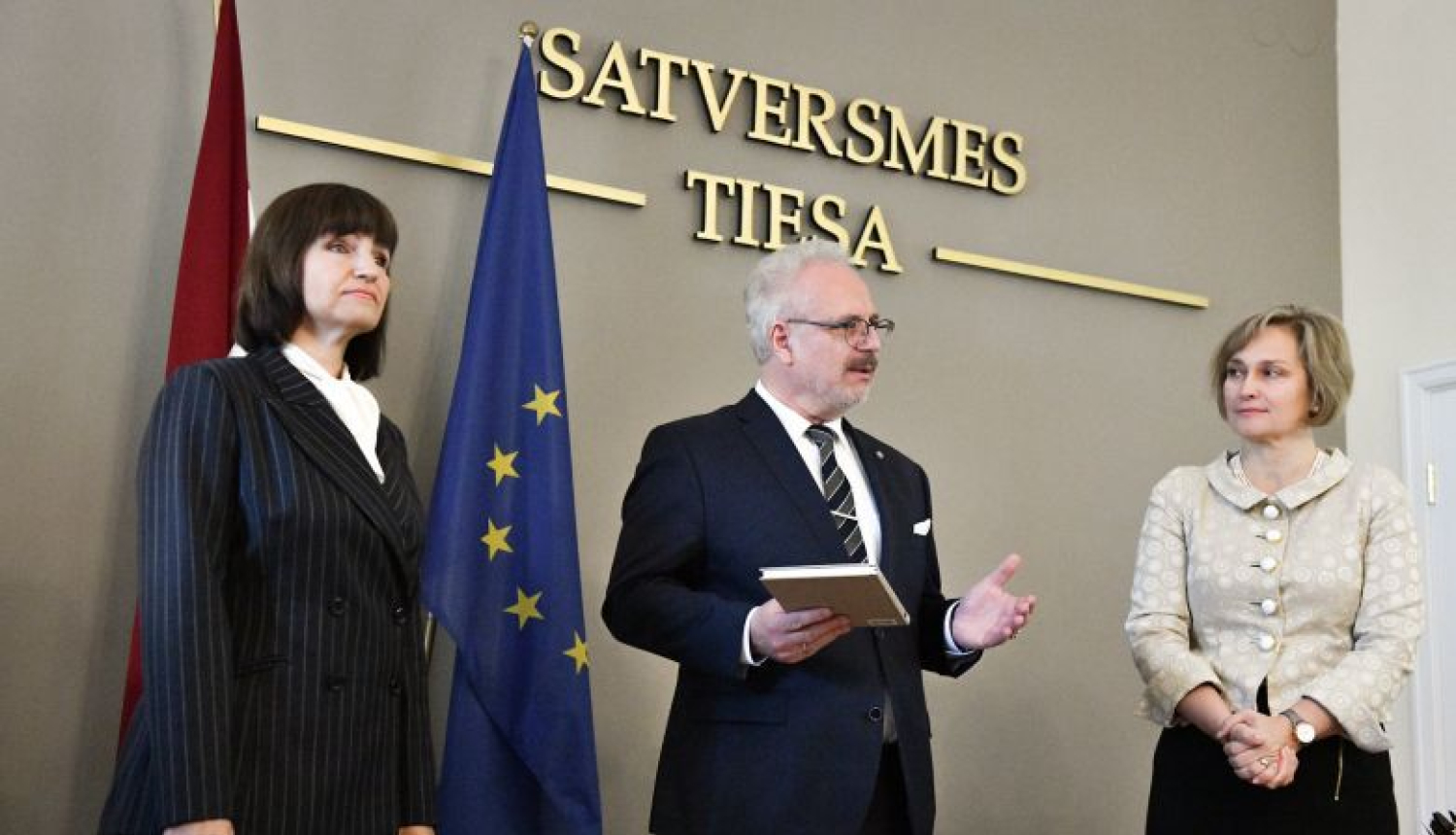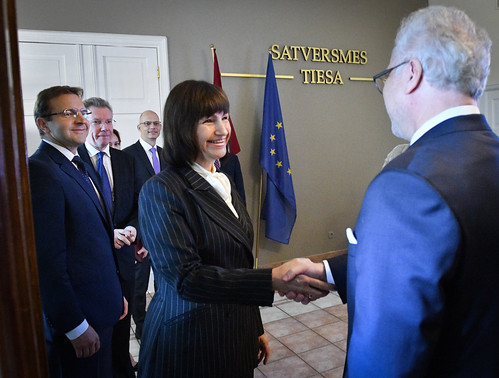Dear colleagues and friends,
I am deeply honoured to have been invited to this event of the Constitutional Court.
I
We must make sure that the ‘landscape’ of our Constitution, Satversme, becomes more ‘distinctive’ in topographic terms both in the eyes of our society and, more importantly, the legal professionals. By ‘distinctive’ I mean the understanding that Latvia is an abstract legal entity which operates (not indirectly, but directly) through its constitutional ‘arms’: President of Latvia, Saeima, Cabinet of Ministers, Constitutional Court, Supreme Court and State Audit Office.
All of these institutions are a part of one hierarchical system, and each of them represents the legal entity of the Republic of Latvia individually at the same time. In addition, Constitutional Court has also developed the principle of institutional loyalty which determines the interaction between the constitutional institutions.
According to theory of the state, constitutional institutions should be given a more prominent role in various processes, including, as honourable Chairperson of the Constitutional Court, Ineta Ziemele, mentioned, adoption of the budget. And I have clearly emphasised this to the Prime Minister and the Minister for Finance.
II
Constitutional Court is the youngest of all constitutional institutions, founded 74 years after the adoption of Satversme. I am proud to be among those who worked on the initial draft of the Constitutional Court Law, which was ‘scaled down’ in 1995/1996 when constitutional claims were excluded from the scope of competence of the Constitutional Court. Later, in 2000/2001, this function was given back to it.
Constitutional court is one of significant instruments of a modern state. Considering that states are becoming increasingly complex and complicated, the toolkit of a modern state can, of course, be expanded. We are currently considering another constitutional institution, the National Council. And I get this deja vu feeling again. The same concerns that were raised in the discussion about the necessity for the Constitutional Court are now being used when discussing the need for the National Council. I believe that a modern state, and although in terms of population Latvia is a small country, it is as modern and advanced as most countries, should do its utmost to meet the highest standards, including appropriate set of constitutional institutions.
III
I think that the book published by Constitutional Court is a very interesting and good project due to several reasons. First, because Constitutional Court has highlighted several constitutional facts which are significant from the perspective of the state continuity doctrine, the core principle of our legal system.
Let me step aside from the Constitutional Court and mention three distinct facts about Satversme, i.e. in its 1944 memorandum, Latvian Central Council, which became the central institution of national resistance movement after the occupation, referred to Satversme, and based its claim for restoration of independent and democratic Latvia on Satversme. Let me emphasise the word ‘democratic’, because it was the undemocratic government of Latvia that seized to exist on 17 June 1940, while, based on Satversme, national resistance movement continued demanding restoration of independent and democratic Latvia in 1944.
Another interesting constitutional fact is that in 1948, senators who were in exile adopted a resolution on continuity of the Latvian state, referring again to Satversme.
And, of course, there is also the restoration of independent Latvia in 1990/1991, which was legally declared on 4 May 1990. Continuity of Latvia was textually embedded in the foundations of the state of Latvia. Later Constitutional Court developed this notion even further in its case-law.
Out of all judgements regarding continuity, there is one that I would like to mention. It is the judgement of 13 May 2010 about the legitimacy of the diplomatic service after the occupation. The Court ruled that despite the Citizenship Law, foreign service was legitimate. It was legitimate as it operated under the higher principle of Raison d'État. This judgement essentially establishes several facts, facts that become apparent from the ruling, and one of such findings is that wording will always depend on the principle. And our colleagues have vividly exposed the underlying principles. Secondly, this judgement legitimises the diplomatic service and thus also the doctrine of continuity of state of Latvia. This judgement is therefore absolutely fundamental.
IV
Let us go back to the book. I think it is an extremely good and sincere effort because Satversme is a text, a wording which, as I already mentioned and colleagues underlined, shall always be construed through its underlying principles. Text can only be interpreted through the principles, and this is exactly what the Constitutional Court does by adding new layers of meaning to these concepts. Instead of a text full of letters, these interpretations turn Satversme into what is known as a ‘living instrument’ in legal science, a concept that we have transferred from the case-law of the European Court of Human Rights. And this ‘living instrument’ continues to evolve through the Constitutional Court and better public awareness of what Satversme embodies. When it comes to public awareness, we must also ensure that our young people fully understand what Satversme is.
As lawyers usually say, these drawings are more ‘abstract’ to me. They do not attempt to depict Satversme, principle of equality or any other principles underlying Satversme. It is rather a creative interpretation of the text of our constitution as seen by a child or a youngster, our young people. I think we, the lawyers, should pay close attention to what they convey. Thank you to everyone who contributed to publishing of the book, either by giving ideas, putting those ideas to practice or making an artistic input.





